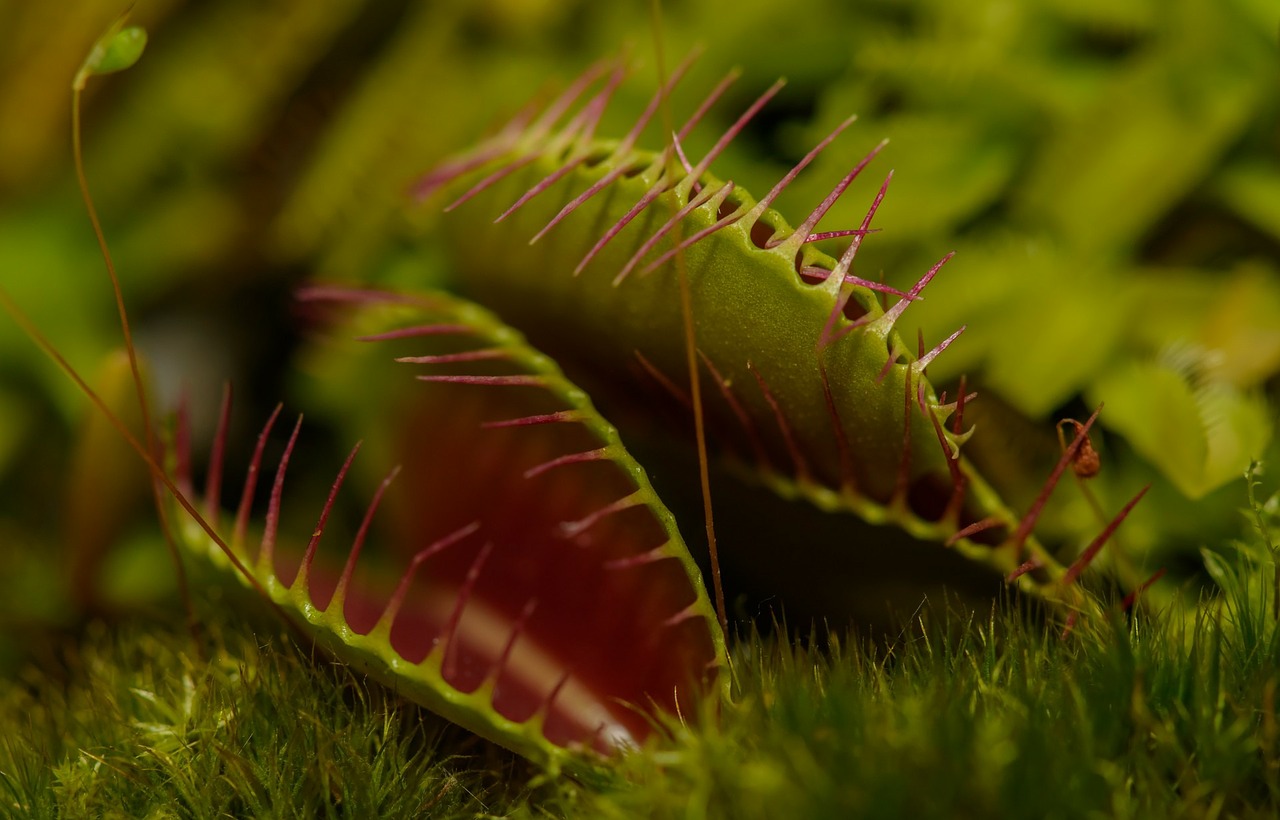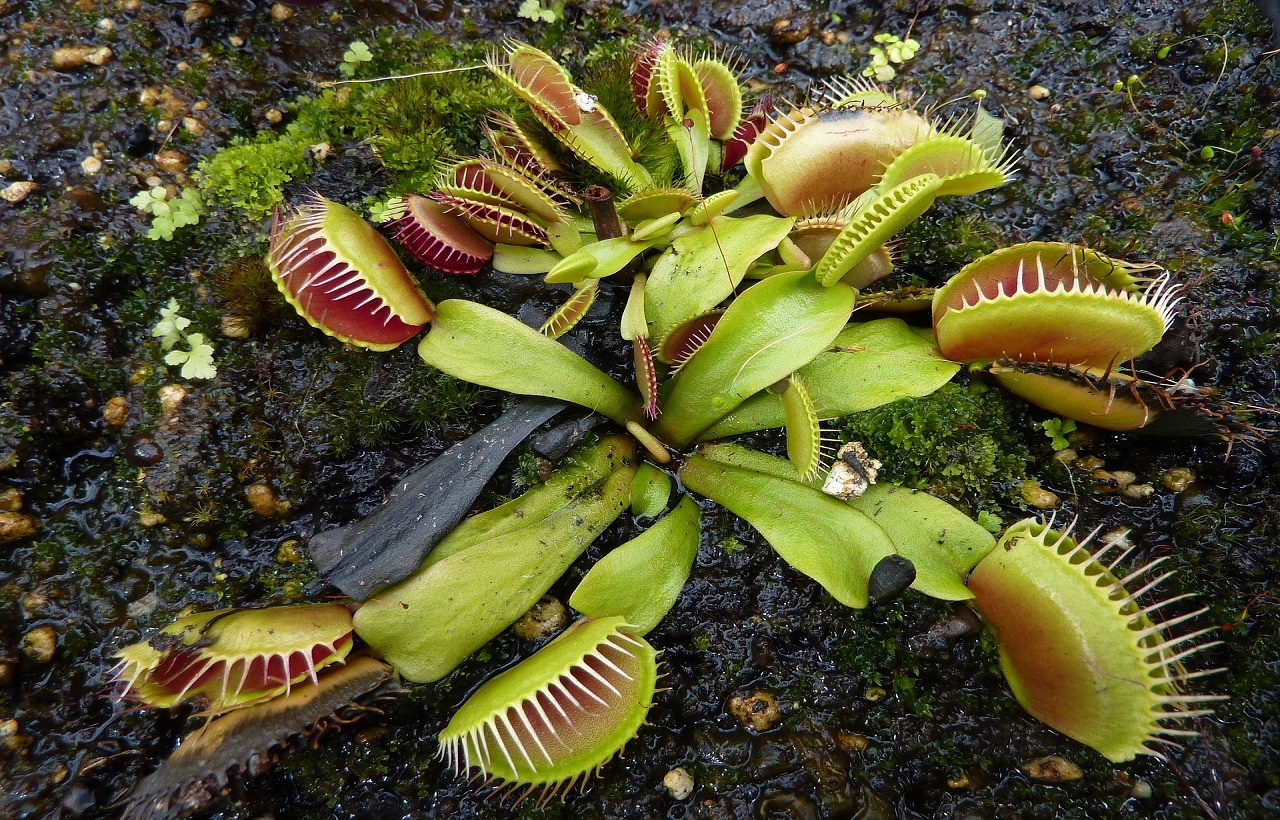They catch their prey with sticky secretions, with traps or pitfalls filled with liquids that dissolve prey’s body and even makes use of a triggering mechanism that quickly closes when unsuspecting insects accidently touch them – the carnivorous plant have evolved several methods of eating animals. But the problem with digesting their prey has been far more difficult for nature to solve, according to a new study.

Carnivorous plants are unusual, and a bit bizarre. They have evolved to trap and kill food, instead of drawing their nutrients from sunlight, the air, and soil.
Scientists have now mapped the genome of the Albany pitcher plant (Cephalotus follicularis), a compact, low-growing plant with little hairy pit-fall traps filled with a liquid. Insects that fall into the liquid dissolves, providing the plant with nitrogen-containing substances.
Such pitfall traps have been developed at least six times during the course of evolution, all independent of each other. The best known are perhaps the so-called Kann Vines from Southeast Asia, Madagascar and Australia, and the Venus Fy Trap from North and South America. Other carnivorous plants have developed quite different approaches. The well-known venus fly trap uses a type trap – when an insect touches the sensory hairs of the catching leaves, they fold together over the insect.
The researchers compared the genomes of Cephalotus and three other carnivore species and found that all species, even though they evolved independently during the course of evolution, and even though it’s been many millions of years with evolutionary branches separated from one another, have evolved the same exact biological machinery to facilitate a carnivorous lifestyle.
The most difficult problem for a plant that develops into a carnivorous lifestyle is not to develop the trapping mechanism. It is to dissolve their prey and make use of the nutrients contained within.
A new study shows that the plants make use of a small number of genes that normally encode proteins that protect against diseases and stress-related disorders. In this new role, however, the proteins convert into enzymes that break down and dissolve the trapped animals.
The various species of carnivores plant have the exact same genes which suggest that there are only a limited number of ways to go if you want to be a carnivorous plant. All plants were faced with the same problem and have developed the same genetic toolbox to solve it. This is a process known as ‘convergent evolution’ by which analogous structures with similar form or function have evolved that were not present in the last common ancestor species.
“These plants have a genetic toolkit, and they’re trying to come up with an answer to the problem of how to become carnivorous,” said study co-author Victor A. Albert, a biologist at the University at Buffalo, in a news release. “And in the end, they all come up with the same solution.”
Nearly 600 species evolved into being carnivores which is actually not a significant number. Probably limited by the type of specific environment where a carnivorous survival strategy is a good – or even vital – strategy to evolve.
Such environments are, in most cases, nutrient-poor areas, where important elements such as nitrogen are in short supply. These include places where the soil is thin and soil acidity is high such as bogs, marshes, and rocky slopes.
Many carnivorous plants have evolved in rain forests, where competition between species is very high and the soil is poor in nutrients, such as Sumatra and Borneo. Special adjustments have been necessary for survival – such as the ability to capture and digest insects and other small animals.
The study Genome of the pitcher plant Cephalotus reveals genetic changes associated with carnivory has been published in Nature, Ecology, and Evolution.
Reference:
Kenji Fukushima, Xiaodong Fang, Mitsuyasu Hasebe Genome of the pitcher plant Cephalotus reveals genetic changes associated with carnivory doi:10.1038/s41559-016-0059













![OpenAI. (2025). ChatGPT [Large language model]. https://chatgpt.com](https://www.illustratedcuriosity.com/files/media/55136/b1b0b614-5b72-486c-901d-ff244549d67a-350x260.webp)
![OpenAI. (2025). ChatGPT [Large language model]. https://chatgpt.com](https://www.illustratedcuriosity.com/files/media/55124/79bc18fa-f616-4951-856f-cc724ad5d497-350x260.webp)
![OpenAI. (2025). ChatGPT [Large language model]. https://chatgpt.com](https://www.illustratedcuriosity.com/files/media/55099/2638a982-b4de-4913-8a1c-1479df352bf3-350x260.webp)








